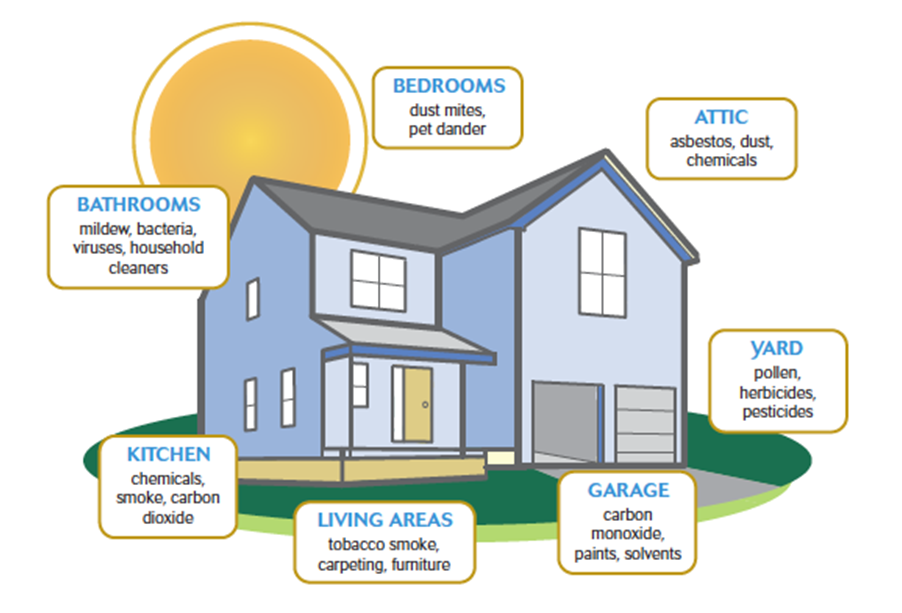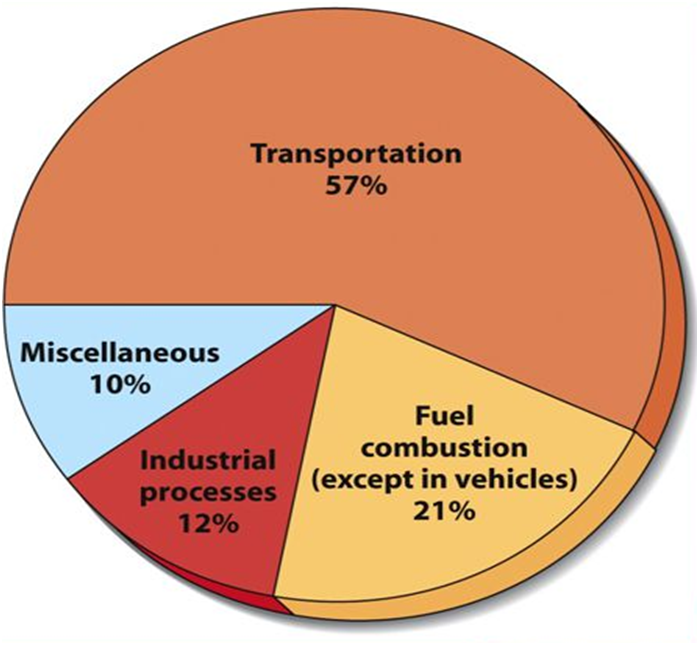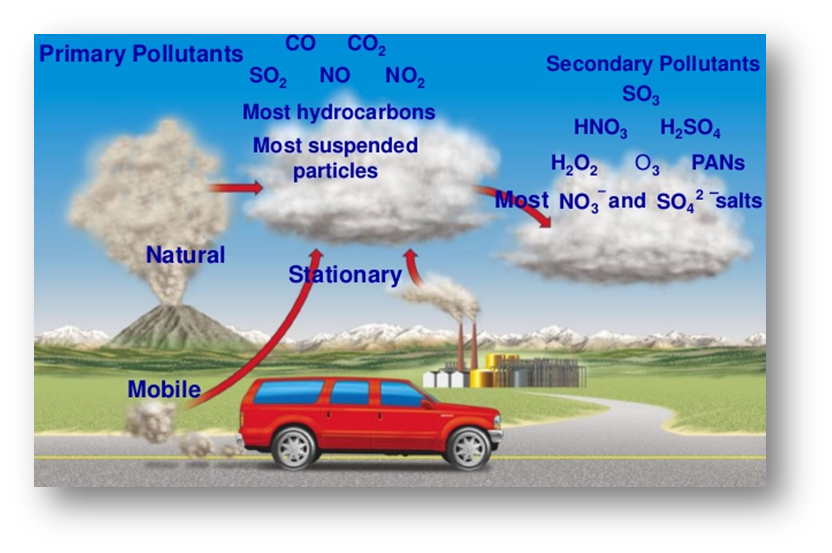- Books Name
- Class-8 Science Book
- Publication
- PathSet Publications
- Course
- CBSE Class 8
- Subject
- Science
How does Air Get Polluted?
Air Pollutants:
Any unwanted or harmful substance present in the air that decreases its quality and contaminates it is called air pollutants. For example, smoke is an air pollutant. Air pollutants can be classified into different categories based on their sources.
- Contaminants of air are called air pollutants.
- They can be having varied sources such as natural sources like smoke and dust arising from forest fires or volcanic eruptions or man-made sources like factories, power plants, automobile exhausts and burning of firewood and dung cakes.
- Vehicles produce high levels of pollutants like carbon monoxide, carbon dioxide, nitrogen oxides and smoke.
- Carbon monoxide is produced from the incomplete burning of fuels such as petrol and diesel
- Smog: It is a thick fog-like layer in the atmosphere, especially during winters. It made up of smoke and fog
- Smoke contains oxides of nitrogen which combine with other air pollutants and fog to form smog.
- Many industries are responsible for causing air pollution.
- Petroleum refineries are a major source of gaseous pollutants like Sulphur dioxide and nitrogen dioxide.
- Sulphur dioxide is produced by the combustion of fuels like coal in power plants.
- Chlorofluorocarbons (CFCs) are used in refrigerators, air conditioners and aerosol sprays.
1. Indoor and Outdoor Air Pollutants
Indoor pollutants
These pollutants are generated indoors in houses, institutions, buildings, or commercial facilities. Indoor air pollution may not severely impact people's health but can certainly affect them in the long run. Different indoor pollutants are:
- tobacco smoke
- biological pollutants like pet hair, fungi, bacteria, pollens etc
- building materials like lead and asbestos (asbestos can cause cancer)
- gases such as carbon monoxide

What is indoor air quality (IAQ)?
Indoor air quality is defined as the quality of the air within houses, buildings and commercial structures. Low indoor air quality can lead to immediate effects such as irritation in the eyes, redness of eyes, headaches, or dizziness. It may also lead to adverse effects in the long run such as the problem of asthma. Air purifiers are used in many houses and offices to ensure clean air in the surroundings.
Outdoor Pollutants
Outdoor air pollution refers to the contamination of the air in the open environment. Outdoor air pollutants generally arise from the burning of fossil fuels, smoke from industries and vehicles. They adversely affect the quality of the air and hence the whole environment of the earth. Different outdoor pollutants are:
- carbon monoxide
- nitrogen oxide
- Sulphur Dioxide
- hydrocarbons

2. Primary and Secondary Air Pollutants
Depending upon their emission into the air, the air pollutants can be categorized as primary or secondary. Primary pollutants are the ones that are emitted directly into the environment. For example, harmful gases such as carbon monoxide, carbon dioxide, sulphur dioxide, nitrogen oxide, etc, are emitted directly from industries and vehicles into the air.
Secondary Pollutants are the ones that get generated due to the reactions between various constituents of the year. For example, acid rain is a secondary pollutant. Nitrogen oxides react with the water vapour present in the air and form nitric acid.


 PathSet Publications
PathSet Publications
